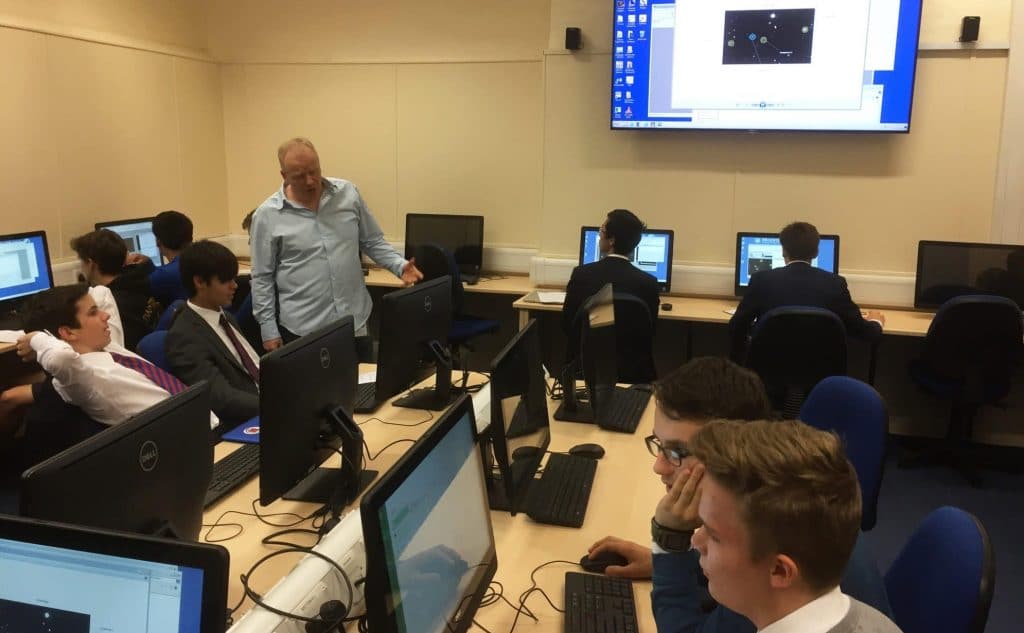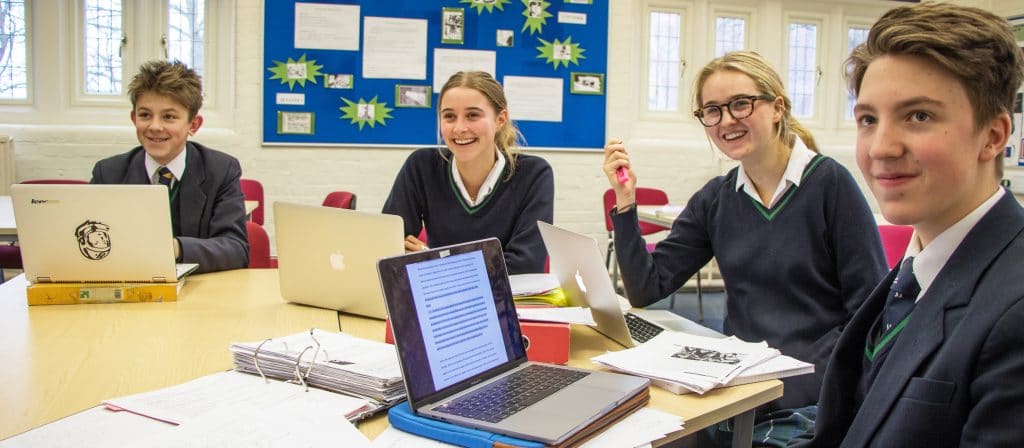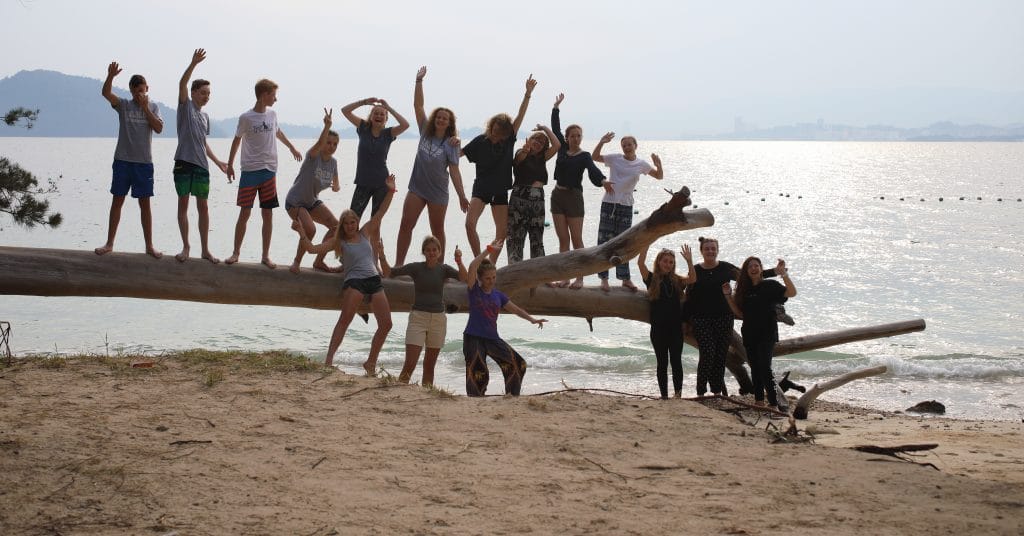PROFESSOR NICK LONG (IMPERIAL COLLEGE)
2017: TRANSITION METALS AND THEIR USES
In the second annual Ryle Lecture, Professor Long introduced various transition metals and their uses, ranging from catalysis to medical imaging, the latter of which is the subject of his work alongside medics at Imperial College. The talk enhanced pupils’ understanding of their studies on the subject in class as they explored how orbitals and oxidation states can explain parts of how such materials work, expanding on the core knowledge taught on the IBDP and at A Level.
Professor Long detailed how the different shapes of molecules allow different catalysts to interact with normally stable molecules using the example of the catalytic converter present in a car. He went on to reveal the large molecules that a simple transition metal is built upon which in turn creates highly complex molecules.
The lecture highlighted how many different branches a subject such as Chemistry has and provided a unique insight into a topic not covered in such depth by the syllabi.
PROFESSOR JOHN GROTZINGER (CALTECH, JPL, NASA)
2018: CURIOSITY’S SEARCH FOR HABITABLE ENVIRONMENTS ON MARS
Professor Grotzinger (pictured below)is a Chief Scientist on NASA’s rover Curiosity which is currently exploring the surface of Mars. He is involved in several planetary missions and his main focus is on the geology of the planets or moons that NASA has visited. From the geological data collected, he is able to ascertain information about the atmosphere of each planet or moon.
Connecting with the College over Skype from his home in America, Prof Grotzinger described the complexities of the landing procedures of the Mars rover, including how they decided where to land. He explained that, after travelling 54 million kilometres, they were able to land the rover only 1.5km away from the centre of their landing zone.
Professor Grotzinger also provided a fascinating account of the geological features of Mars and how we can see similar features on Earth which has helped to inform NASA about the escape of water from Mars. Whilst life has not been found there he said there was definitive proof of water presence in the planet’s past.
Later this year we will welcome author and astronomer Colin Stuart who will give a talk on How to Live in Space. Colin has written several books, including How to Live in Space, Mars: The Traveller’s guide, The Speed of Starlight, and The Universe in Bite-Sized Chunks.






